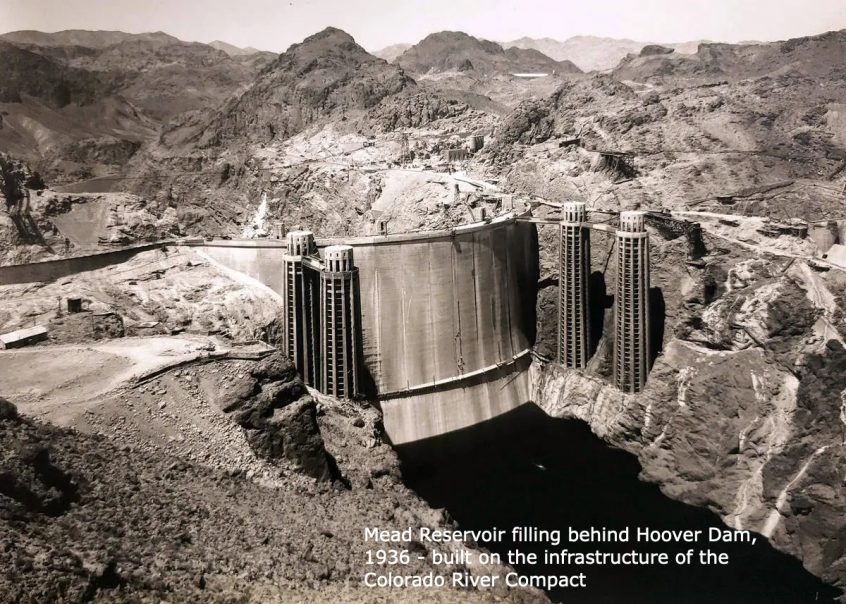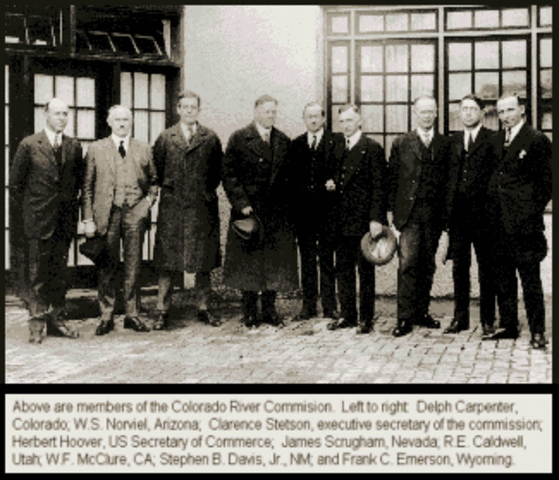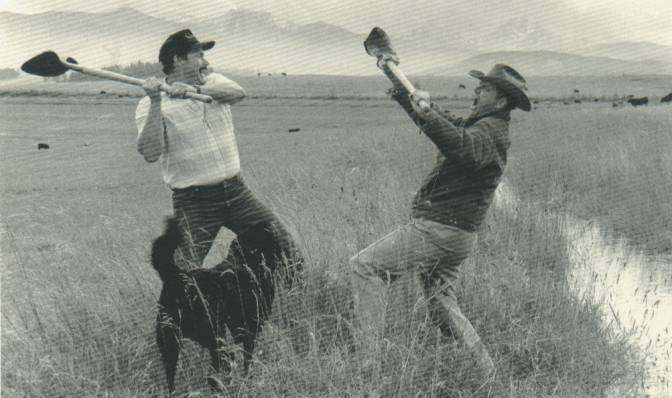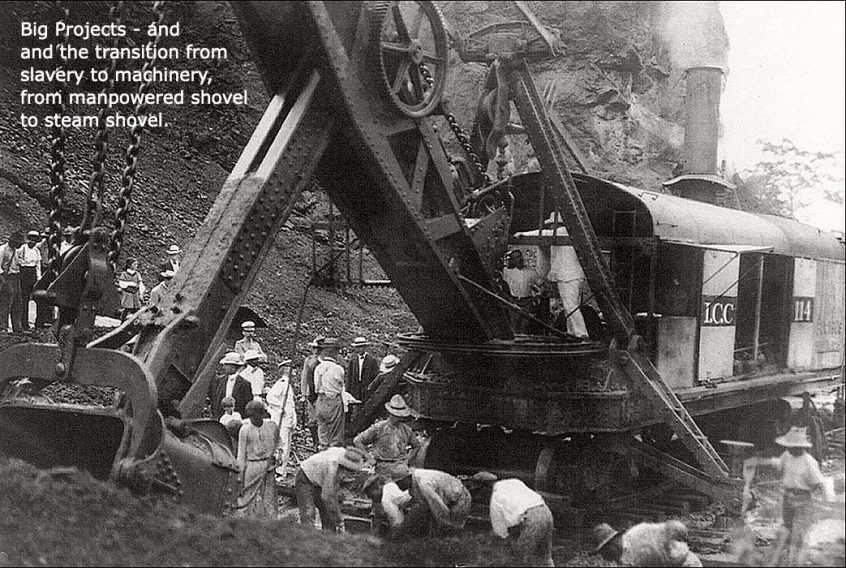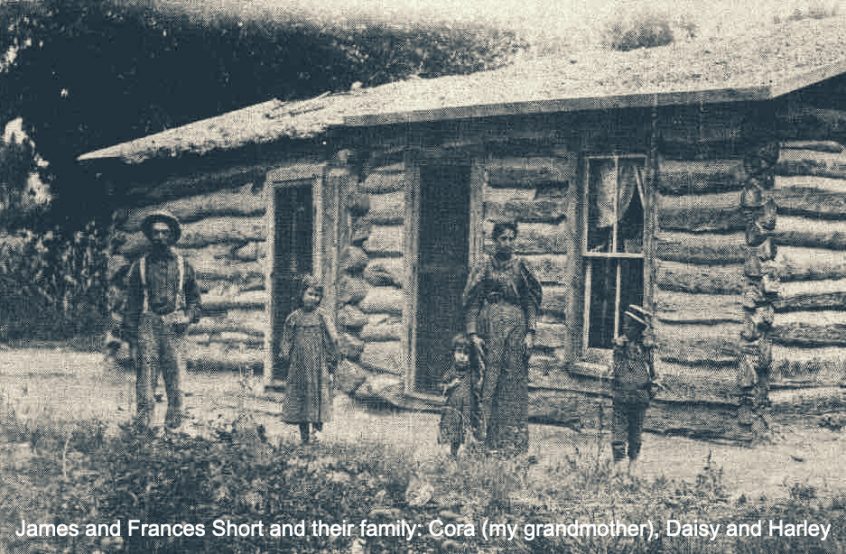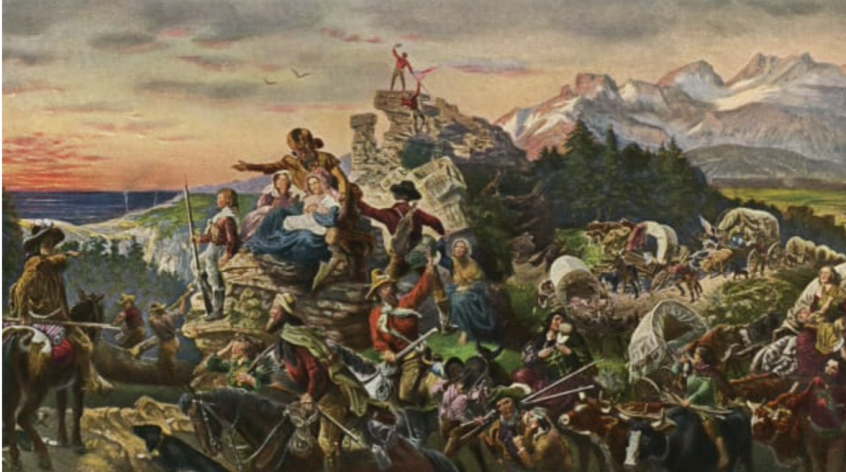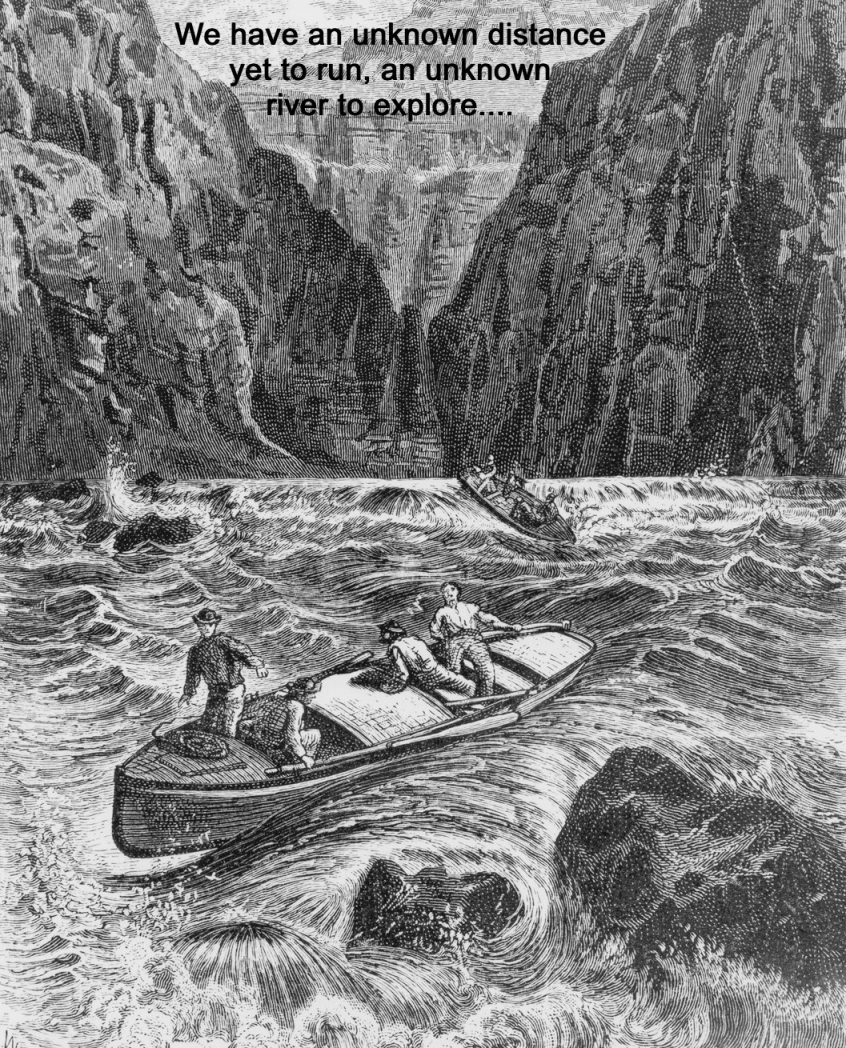Have you heard of the wonderful one-hoss shay, That was built in such a logical way It ran a hundred years to a day … – Oliver Wendell Holmes We’ve been exploring the Colorado River Compact here – which, like Oliver Wendell Holmes’ ‘wonderful one-hoss shay’ has now lived almost ‘one hundred years to the day’ – the commissioners signed off on it November 24, 1922. The century mark is a good place to pause and pull back for a larger perspective on something like a multi-state agreement and see what it has and hasn’t actually accomplished – but without losing sight of the romantic vision of conquest that drove the Compact’s formation, back in the early decades of the Anthropocene Epoch when reorganizing the prehuman world was still fun. In the last post here, we looked at the ‘major purposes’ cited in the first article of the Compact: the first listed purpose, ‘to provide for the equitable division and … Read More
Romancing the River: Onward and – well, onward with the Colorado River Compact
If any drink [of the Hassayampa], they can no more see fact as naked fact, but all radiant with the color of romance. – Mary Austin Before getting into the Colorado River again, I want to put out a plea: Please recognize the importance of the coming ‘midterm elections.’ Especially if you live in one of 15 percent of our congressional districts that has not been gerrymandered to a foregone outcome. This is a ‘tipping point’ election, not between two political parties trying to work things out, but between two political concepts with no middle room for compromise: if both houses of Congress tip toward the Republicans this election, rather than remaining barely tipped toward the Democrats, then we are going to be taking a big bumbling step toward authoritarian governance, and away from our evolving American experiment in government by, for and of the people. I think I’m probably preaching to the choir here, but please do what you … Read More
Romancing the River: Colorado River Compact, Part 2 – Divide to Conquer
“Have you heard of the wonderful one-hoss shay, That was built in such a logical way It ran a hundred years to a day … – Oliver Wendell Holmes The last episode here ended with representatives of the seven Colorado River Basin states gathering in Washington, DC, as a commission charged, in the words of Herbert Hoover, U.S. Commerce Secretary and Chair of the Commission, ‘to consider and if possible to agree upon a compact between the seven states … providing for an equitable division of the water supply of the Colorado River and its tributaries amongst the seven states.’ He went on to note that ‘this Conference is unique in its attempt to determine states’ rights over so large an area by amiable agreement.’ That was in January 1922; in 2022 we commemorate the centennial of a compact created by the Commission and ratified by six of the seven states and the U.S. Congress, enabling the controlling and harnessing … Read More
Romancing the River: Colorado River Compact – Part 1
You have probably heard that this is the centennial year for something called the Colorado River Compact – possibly spoken of or written about in the reverential tones usually reserved for Biblical material. The foundation, the cornerstone, et cetera, for something called, with equivalent solemnity, ‘The Law of the River.’ We will spend some time here on the Colorado River Compact because it is an important document – but not necessarily a document that deserved to exist unaltered and unamended in a kind of hallowed state for a century. Something like our U.S. Constitution in that regard – which has been amended, although not in all the places where it most needed it. But the authors of both documents would be horrified to see their work regarded as sacred texts. This first post focusing on the Compact will explore why a river compact was even necessary in the development of the Colorado River. It may come as a surprise to … Read More
Romancing the River 6: Law and Some Order
Last episode here, we saw the engineering contingent in the Reclamation Service ‘breaking loose’ from the science-driven US Geological Survey, becoming the Bureau of Reclamation in 1907; Reclamation’s engineers were no longer constrained to the smaller local projects envisioned in the 1902 Reclamation Act, but were free to take on larger, regional projects like the Theodore Roosevelt Dam or the Gunnison Tunnel described in the last post. But before the Bureau of Reclamation could really launch into controlling and developing the Colorado River mainstem, there was another, less visible ‘political infrastructure’ that had to be constructed, around the dynamic water law that had evolved in the seven states whose destiny depended on the Colorado River. A basin-wide interstate issue about water rights had to be worked out. Time now to take a look at the water law foundational to the development of the arid West. Western water law begins with a simple premise: first come, first served. This is the … Read More
Romancing the River 5: Unleashing The Engineers
By 1900, the Americans were ready to take on the Colorado River, economically, politically, psychologically – and perhaps most important, technologically. In 1904 the United States went to work down in the tropics, far from home, on the Panama Canal, undertaken to shorten by weeks the boat trip from the Pacific ports to the Atlantic ports. This was a project comparable to the building of the Egyptian pyramids and the European cathedrals, all done with human and horse power. If you don’t have a bulldozer or power shovel and a truck the size of a house to move dirt around, then you give a hundred men shovels and another hundred wheelbarrows. Where do you get the two hundred men? All previous civilizations depended on slaves acquired from surplus populations or conquered peoples for the heavy lifting. Sometimes it was paternalistic slavery like we practiced in the quasi-agrarian South, where the slaves were ‘owned’ and to one degree or another fed … Read More
Romancing the River 4: Meanwhile Back in the Anthropocene….
Time to hit the pause button on unfolding the history of what Frederick Dellenbaugh called ‘The Romance of the Colorado River.’ I got a reminder from a reader of these posts, who appreciates the history but is more concerned with ‘what our future will look like.’ A good reminder – I did say, at the beginning here, that exploring ‘how to live in the Anthropocene’ is the basic objective of these posts. The coversheet above, from a popular song at the turn of the 20th century is probably not evocative of the way most of us feel here at the ‘Dawn of the Anthropocene.’ It might be important, however, to point out a distinction that might also be a difference; we are probably not at the Dawn of the Anthropocene today. The climatologists, geologists and other scientists who are in general agreement that a single species of life on earth has been, however naively, imposing planet-scale changes on the Earth, … Read More
Romancing the River 3: A River to Love but Sometimes Really Dislike
‘Man, during all his wanderings in the struggle for subsistence, has universally found [the rivers] his friends and allies…. ‘By contrast, it is all the more remarkable to meet with one great river which is none of these helpful things, but which is a veritable dragon, defiant, fierce, opposing utility, refusing absolutely to be bridled by Commerce, perpetuating a wilderness, prohibiting mankind’s encroachments…. – Frederick Dellenbaugh Romance of the Colorado River My great-grandfather James Short came into the valley of the North Fork of the Gunnison River in 1883, two years after the Ute Indians had been force-marched from the Gunnison River valleys to reservations straddling the Colorado-Utah border. He was 24, and came with his mother Margaret Ann Short Sheppard, his stepfather William Sheppard, brother Frank and sister Cora. The family left Ohio in 1880 for Kansas, then came on to Colorado two years later. What moved Euro-Americans in the 19th century to load their lives into a wagon, … Read More
Romancing the River 2: Manifest Destiny meets the Great American Desert
In the last post, I unabashedly advanced the hypothesis that most of what happened in the Colorado River region, over the past century and a half, might have been the consequence of a cultural microbe that spread through the system from the ‘fabled Hassayampa,’ an intermittent Colorado River tributary in Arizona: ‘of whose waters,’ according to desert writer Mary Austin, ‘if any drink, they can no more see fact as naked fact, but all radiant with the color of romance.’ This could explain many things, throughout the West, that seem inexplicable to Americans today, for whom the drinking water has been cleansed of all life including the Hassayampa bug, and who therefore cannot understand why or how earlier generations could have done what we have done with and to the River. A ‘romance’ is not necessarily a love story, although it will always involve passionate feelings. The first book about the Colorado River and its modern history was Frederick Dellenbaugh’s … Read More
Romancing the River 1: The Romance of Science
As we’ve seen over the past several posts here, humans have inhabited the region of what we now know as the Colorado River, Rio Colorado, River of Color, for ten or twelve millennia – in small wandering bands most of that time, hunters and foragers; then as their numbers grew in the mellow Holocene, they became settled farmers with increasing levels of regional socioeconomic organization to handle even larger numbers – then their increasingly complex cultures collapsed under still growing numbers, with great population loss, and the survivors went back to small farming communities; some even went back to hunting and foraging. The remaining relatively stable first peoples in the region of the river were then disrupted half a millennia ago by invasions of Europeans experiencing their own homeland Holocene population explosions. Crossing the Atlantic Ocean, first from southern Europe, then mostly from northern Europe, and armed with guns and germs, they – we – overran and either destroyed or … Read More

